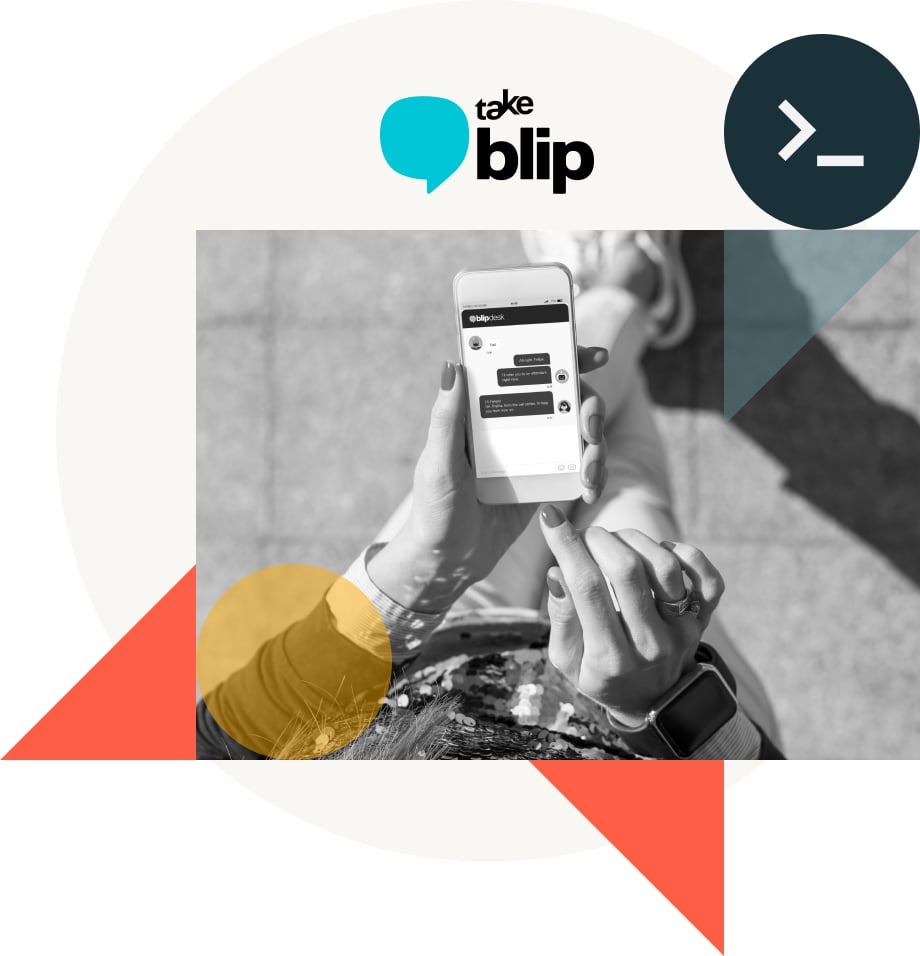Reshaping the customer experience with humanized chatbots
In annual IT operational cost savings
Increase in message delivery velocity — from 650 million/day to 1.25 billion/day
To deliver BI dashboards compared to 24 hours

Over the past decade, chatbots have transformed first-line interactions, from payment processing to lead generation and customer support, with the goal of becoming more humanlike and conversational. At Take Blip, behavioral and customer information is not only captured and used by their self-learning chatbots, but it’s also used to build intelligence dashboards that help both internal teams and customers manage operational performance. With the ongoing rise in data volumes and velocity, the company started experiencing insight bottlenecks as data silos grew too complex to overcome and query performance began to buckle under the immense scale. With Databricks Data Intelligence Platform, Take Blip can now easily centralize and democratize all their data to support Power BI dashboards used to improve customer service and marketing, and to train machine learning models that optimize chatbot performance. With a lakehouse architecture, Take Blip can now continue to evolve their communications platform and expand access to real-time data needed to adapt their business to the ever-changing ways companies communicate with people.
Billions of records per second expose scalability issues
As digital technologies continue to enhance the way brands interact with their customers, data must deliver targeted communications that are both natural sounding and actionable to meet evolving customer expectations and create business value. Take Blip is focused on meeting this demand with an innovative communications platform that allows companies to build automated chatbots and analyze the information they capture — improving both customer engagement and business health. By connecting various business workflows with engagement channels like the website, WhatsApp and Facebook Messenger, Take Blip’s intelligent chatbots not only engage customers with authentic conversations, but they also collect behavioral information that can be examined for various insights to improve business operations from marketing strategy to customer success.
When digital communications between consumers and brands shot up exponentially at the start of 2020, Take Blip was forced to rethink how to respond and scale to meet pandemic-induced demands. Quite suddenly, it needed to go from a company ingesting an average of 45 million records per day to 1.25 billion records. Under these circumstances, challenges began to arise as bottlenecks in the delivery of insights occurred thanks to this burst of new data. Compounding the problem was the immense velocity of data being ingested, as data silos made it difficult to access real-time data and unify it with existing data to create a holistic view that customers needed to make better decisions.
“Query performance was not at the standard we needed given the scalability issues we were dealing with,” said Tiago Amaral Batista, Tech Lead and Data Engineer at Take Blip. “We weren’t able to meet the needs of our customers, as it would take 24 hours to generate a dashboard.” Internally, the data science team also struggled with scale since they couldn’t train machine learning models against their entire data set, limiting the true potential of their chatbots. Understanding the importance of data to the future of their business, Take Blip made the decision to address the limitations of their current approach to analytics and AI by migrating to a lakehouse architecture.
Lakehouse centralizes data for analytics and AI
The lakehouse architecture gives Take Blip a single storage layer for all their data — structured, semi-structured and unstructured — for all their business intelligence, analytics and machine learning needs. With Databricks Data Intelligence Platform fully integrated into their infrastructure, Take Blip realized the immediate benefits of a single open system to both manage all their data and support every use case. Data was centralized within the lakehouse and easily accessible for ETL, analytics and machine learning workloads. With Delta Lake as its foundation, they were able to scale ETL pipelines reliably and without sacrificing performance. With a common view into all their data, Take Blip used Delta Sharing to securely share behavioral and interaction information captured by their chatbots’ conversations with customers and internal users, without replicating or moving the data from their cloud storage.
“Delta Sharing has made it easy for us to democratize all the insights we’re able to capture. We can securely share these insights with our customers on any cloud or region, even if they are not on Databricks,” explained Batista. “Now our customers can easily understand important data points such as the number of users, messages received per day, percentage of messages not attended to on first try, and share these insights with various teams to improve operational performance.”
Unity Catalog helps Take Blip centralize the governance of all their data sets across analytics and machine learning needs. Batista said, “With Unity Catalog, all of our workspaces can share a common view of the data in a secure and collaborative way.”
Databricks also integrates seamlessly with Power BI, which is used to generate chatbot performance and business operations insights on the most complete and freshest data. “Power BI has removed any technical barriers to generating reports and dashboards. This has changed the way our business users, both internally and externally, consume and act on data insights,” added Batista.
Learning from every digital interaction
Since moving to the lakehouse, Take Blip has experienced a vast improvement in their ability to adapt to changing consumer behaviors, including delivering near real-time dashboards to customers and internal teams in seconds rather than the typical 24-hour turnaround.
Take Blip has also seen a significant decrease in IT operational costs on Databricks. Pairing the efficiencies of the cloud with cost optimization features within the Databricks Data Intelligence Platform, they have lowered storage costs by $1.2M reais per year. Additionally, in 2021 alone, Take Blip saw a reduction of more than $1M reais in ongoing platform maintenance costs in support of their various data projects.
In the coming months, Take Blip plans to dive deeper into the lakehouse to further explore their data and take advantage of the growing sophistication and accuracy of AI to deliver new communications and interaction products in a simplified and scalable way.

